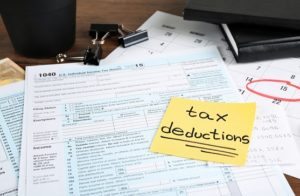Things to Consider for Your 2015 Capital Gains Tax
There are all kinds of investors in the world. Some are looking to make a quick buck by buying and then quickly selling stocks as soon as they increase in value. Other investors buy stocks with an eye toward the future, which means they are in it for the long haul.
In any case, anyone who invests wants to be successful at it. It’s a great feeling to buy stock in a company and see that stock increase in value. However, at some point if you plan on selling that stock and cashing in or your gains, you will have to give a portion of those gains to the taxman. What percentage you will owe will depend on the size of your gain and how long you have owned the stock.
The government wants investors to hold onto their stocks longer. To encourage this they have a lower tax percentage on stocks held longer than a year. Whether you’re a quick turnaround trader or a long-term investor here’s what you should be aware of in 2015 for your capital gains taxes.
First, generally all you need to know to determine your capital gains is the difference between what you paid for the stock and how much you sold it for. When you know that amount then you can calculate the tax. Your tax rate will depend on which bracket you’re in. There are three that apply:
- If your ordinary income puts you in the 10-15 percent tax bracket, then your long-term capital gains rate is 0 percent.
- If your ordinary income falls in one of the 25, 28, 33, or 35 percent tax brackets then your long-term capital gains rate is 15 percent.
- If your ordinary income is in the 39.6% tax bracket, then your long-term capital gains rate is 20%.
There are a few other caveats to remember. For high-income earners, there is an additional 3.8 percent surtax on net investment income. Also, you only pay taxes on the net of your capital gains, which can make a big difference if you sell more than one stock in a year. If you want to learn more about capital gains taxes then please contact GROCO for more answers. Click here or call us at 1-877-CPA-2006.
Are Millennials Changing How We See Leadership?
Are Millennials Changing How We See Leadership? Within just a few years from now, Millennials will actually become the largest employee demographic in the workforce. That means ready or not, Millennials are coming to an office near you. It also means they will soon be taking on more leadership roles. In fact, they have already…
Tips for Avoiding Wire Fraud in Your Next Real Estate Transaction
Tips for Avoiding Wire Fraud in Your Next Real Estate Transaction It is a buyer’s worst nightmare, and it could happen to almost anyone. The wire over a significant amount of money to an account as part of settlement on a real estate transaction. Hours or perhaps a day or two later, they realize that…
Will the IRS Stop States From Avoiding Tax Deduction Caps?
Will the IRS Stop States From Avoiding Tax Deduction Caps? By far, one of the most controversial aspects of the new Tax Cut and Jobs Act (TCJA) has been the reduction in the state and local income tax deduction. This has long been an important deduction for many people. Being able to deduct your state…
Principle Based Leadership
Principle Based Leadership Transformational Leadership Series: What is a leader? Or better, what is a leader’s role in an organization? If the answers to these questions could be culminated to one single sentence it would be: to execute the mission of the organization in the most efficient, effective, and ethical manner, at the highest level.…




